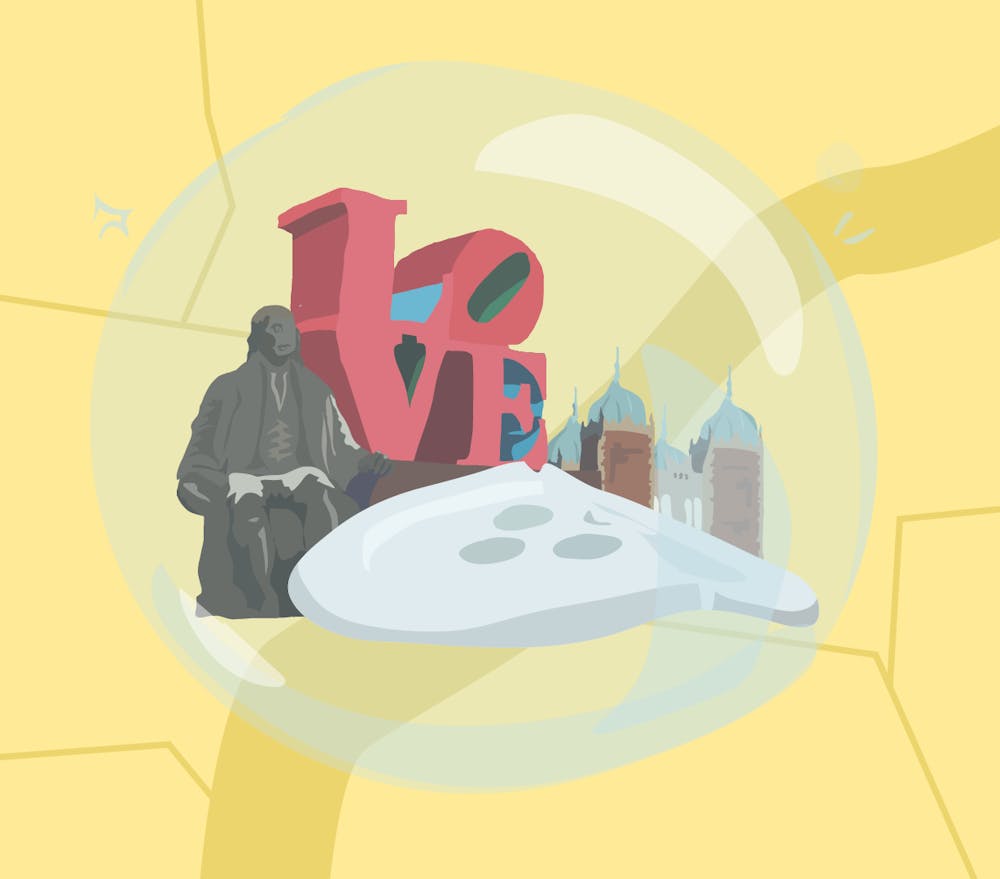
Penn’s grandiose campus that used to be filled with students and bustling at any given time of day is now spotty and bare. Philadelphia, a city that would look just as busy on any given day, is very much the same. It is no secret that this city and this university have suffered from the COVID-19 pandemic — a history that will be etched in the memories of everyone who is a part of either, or both, communities. For students at Penn, especially for those who have awaited their arrival for months, it is imperative that we not only seek to bridge the gap between Penn and this city, but also experience it firsthand if we are ever to understand one another.
As someone who grew up just blocks away from Penn’s campus, I have witnessed Penn from the outside and have almost instinctively been drawn to the intertwined histories of my city and this university. However, it is quite the opposite for some of my peers. When I first heard the infamous phrase “don’t go past 40th street,” I honestly wondered why. Was it because this city, or the people like me, were somehow unbelievably dangerous beyond that point? I questioned: am I excluded from the perceived danger that is beyond because I am a student? For over twenty years, I have lived past those street limits with my family and friends. I am not unique; I am one of many students who call Philadelphia home.
For years, Penn felt foreign or like a fantastical dream that neither I nor any of my Philadelphia peers could ever realize. The long path of Locust Walk was something of a myth and the towering buildings surrounding it hid Penn’s presence. When I became a Penn undergraduate, there was no more mystery.
I began to understand Penn for its culture and its students — many of whom are caring people. I had been oblivious to Penn’s efforts to contribute to my home and the avenues Penn students were taking to continue its improvement. It was somewhat enlightening. Yet, there was also worry about Philadelphia among some students. I wondered if they felt that West Philadelphia was just as foreign as Locust Walk was to me just a few years ago. I wondered if they would change their mind if just given the chance to walk on its streets.
For the students who have longed to arrive on campus, they are thrust into the midst of a crisis both Penn and Philadelphia share. In my neighborhood, I could not begin to tell you where to get tested for COVID-19. On campus, it has become second nature to walk outside of my residence to receive a test within ten minutes time. Though Penn has reached out to some communities, the difference in COVID-19 support is night and day. A lack of awareness of the city-wide situation has already affected the communities outside of Penn’s bubble. In this historical moment, simple actions to mitigate COVID-19 or even to attempt to understand what is happening beyond campus will bridge Penn and Philadelphia closer.
If students continue to separate their existence from that of the West Philadelphia community, then both spaces will remain misunderstood. The community engagement of some Penn students is tremendous and should not be invalidated, but there are many talented students who could benefit Philadelphia if they knew the soul of this city. In order to write “The Philadelphia Negro,” a study on the lives and prejudices faced by African Americans, W.E.B. Du Bois lived among Philadelphians while working in a cramped office at Penn. He chose to live in Philadelphia’s 7th ward and not treat the outside community as subjects or rejects, but as people with stories. He sought to understand their struggles and their lives. Du Bois enhanced his groundbreaking work by he truly living how residents lived and seeing what they saw.
There are other examples of figures who have tied their work with Penn to Philadelphia, such as Nathan Mossell, Sadie Alexander, and Raymond Alexander. Their names are not the ones written in popular history books, but they are the people who are ingrained in the history of this city that I am proud to be a part. Their legacies have shaped what anyone has seen outside of Penn’s bubble. These are the people that built their legacy in Philadelphia because they knew and understood the needs of the people around them. I encourage Penn students to do the same.
I would be remiss to end this article without mentioning Philadelphia’s rich Black history. This includes all of the names mentioned above. Let us also not forget the legacy of Black figures and limit them to just this week, to just a particular month or just this year, but let Black history have eternal remembrance and celebration as a part of American history. If there is no desire to understand the experiences and history of Philadelphia when we are tied together, then the names that have changed this city become lost, and future names will rarely be written down.
HAKIEM ELLISON is a College junior studying political science from Philadelphia. His email is hellison@sas.upenn.edu.
The Daily Pennsylvanian is an independent, student-run newspaper. Please consider making a donation to support the coverage that shapes the University. Your generosity ensures a future of strong journalism at Penn.
Donate







